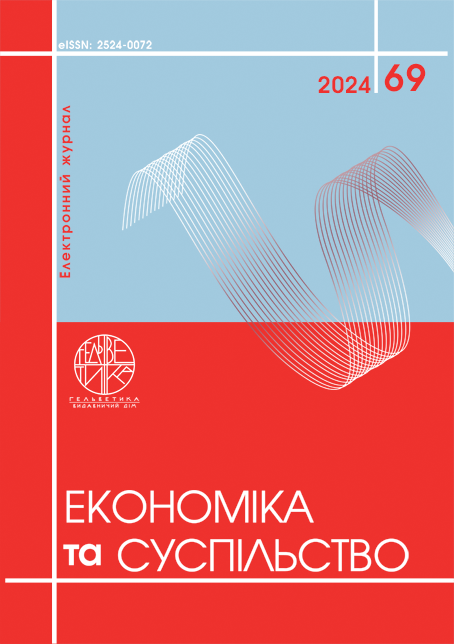DIFFERENT TYPES OF RESTAURANT CONCEPTS AND STANDARDS
Abstract
While there are many different types of restaurants in all shapes and sizes, modern restaurant concepts are moving beyond the traditional fast food, casual dining, and fine dining concepts. Family style or casual restaurant concepts follow a table service/full service model. Family style restaurants strive to create a casual atmosphere where kids are welcome, but adults can enjoy a full bar. Some traditional family style restaurants serve food on large plates, while more casual restaurants serve individual plates. The latest trend in restaurant concepts, fast casual, has taken the industry by storm. Fast casual can best be described as “upscale fast food” that combines casual dining with takeout. Fast casual has all the operational aspects of a fast food restaurant – made-to-order, single-serve packaging – but differs in the quality of the ingredients. You might see organic greens, artisanal bread, or grass-fed beef on a fast casual menu. The concept of a fast food restaurant is that fast food restaurants often mass-produce food to meet take-out demand. The concept of a fine dining restaurant is characterized by high style, high class, high value: fine dining is marked by personal service, formal attire, and elegance. Fine dining restaurants have smaller menus that change weekly or even daily. Chefs use the freshest ingredients they can find, often from local sources. The concept of a café. Best known for coffee, espresso, biscotti, and pastries, cafés offer counter service and strive to create a comfortable, leisurely atmosphere. Cafés are conducive to a cake between lovers, a latte or two to go, and a place to relax for a business interview or a conversation between good friends. The concept of a food truck. The food truck has evolved from a greasy chip truck to a restaurant on wheels. The concept of a pub or bar. Pubs and bars are often visited for their alcohol and social atmosphere, often to bring people together. Pubs and bars often host sports nights and live music, and may have pool tables, darts, pinball and other games. What is the difference between bars and pubs? Despite the diversity of restaurant concepts, they must meet their own standards. Achieving consistency in the provision of food services requires detailed protocols. However, the basis for establishing these protocols is the presence of well-thought-out restaurant standards. Restaurant standards are the basis for any food company's operations, and they significantly affect the growth and reputation of a catering establishment.
References
Архіпов В. В., Русавська В.А. Організація обслуговування в закладах ресторанного господарства : навч. посібник. Київ : ЦУЛ, 2009. 342 с.
Антонова В. А. Ресторанний бізнес в економічному розвитку України. Економічна стратегія і перспективи розвитку сфери торгівлі та послуг. 2010. Вип. 1. С. 595–601.
Доценко В.Ф. Готельно-ресторанна справа як середовище розвитку приватної підприємницької ініціативи. Науковий вісник Міжнародного гуманітарного університету. Серія : Економіка і менеджмент. 2020. Вип. 43. С. 114–119.
Давидова О. Ю. Розробка комплексу концепції маркетинг-мікс 11Р на підприємствах готельно-ресторанного господарства. Соціальна економіка. 2018. Вип. 55. С. 89–96.
Гакова М. В. Концептуальні засади управління поведінкою персоналу підприємств готельно-ресторанного господарства. Торгівля і ринок України. 2018. № 1. С. 62–69.
Ніфатова О. М. Шляхи підвищення ефективності управління персоналом готельно-ресторанного бізнесу. Вісник Київського національного університету технологій та дизайну. Серія : Економічні науки. 2018. № 1. С. 45–54.
Arkhipov V. V., Rusavsʹka V. A. (2009) Orhanizatsiya obsluhovuvannya v zakladakh restorannoho hospodarstva : navch. Posibnyk [Organization of service in restaurants: training. manual] Kyiv : TSUL, 342 р.
Antonova V. A. (2010) Restorannyy biznes v ekonomichnomu rozvytku Ukrayiny [Restaurant business in the economic development of Ukraine]. Ekonomichna stratehiya i perspektyvy rozvytku sfery torhivli ta posluh –
Economic strategy and prospects for the development of trade and services, vol. 1, рр. 595–601.
Dotsenko V. F. (2020) Hotelʹno-restoranna sprava yak seredovyshche rozvytku pryvatnoyi pidpryyem-nytsʹkoyi initsiatyvy [Hotel and restaurant business as an environment for the development of private entrepre-neurial initiative]. Naukovyy visnyk Mizhnarodnoho humanitarnoho universytetu. Seriya : Ekonomika i menedzh-ment – Scientific Bulletin of the International Humanitarian University. Series: Economics and management, vol. 43, рр. 114–119.
Davydova O. (2018) Rozrobka kompleksu kontseptsiyi marketynh-miks 11Р na pidpryyemstvakh hotelʹno-restorannoho hospodarstva [Development of the 11Р marketing mix concept complex at hotel and restau-rant enterprises]. Sotsialʹna ekonomika – Social economy,vol. 55, рр. 89–96.
Hakova M. V. (2018) Kontseptualʹni zasady upravlinnya povedinkoyu personalu pidpryyemstv hotelʹno-resto-rannoho hospodarstva [Conceptual principles of managing the behavior of personnel of hotel and restaurant enter-prises].
Torhivlya i rynok Ukrayiny – Trade and market of Ukraine,vol. 1, pp. 62–69.
Nifatova O. M. (2018) Shlyakhy pidvyshchennya efektyvnosti upravlinnya personalom hotelʹno-restoran-noho biznesu [Ways to increase the efficiency of personnel management in the hotel and restaurant business]. Visnyk Kyyivsʹkoho natsionalʹnoho universytetu tekhnolohiy ta dyzaynu. Seriya : Ekonomichni nauky – Bulletin of the Kyiv National University of Technology and Design. Series: Economic sciences, vol. 1, рр. 45–54.

This work is licensed under a Creative Commons Attribution 4.0 International License.


